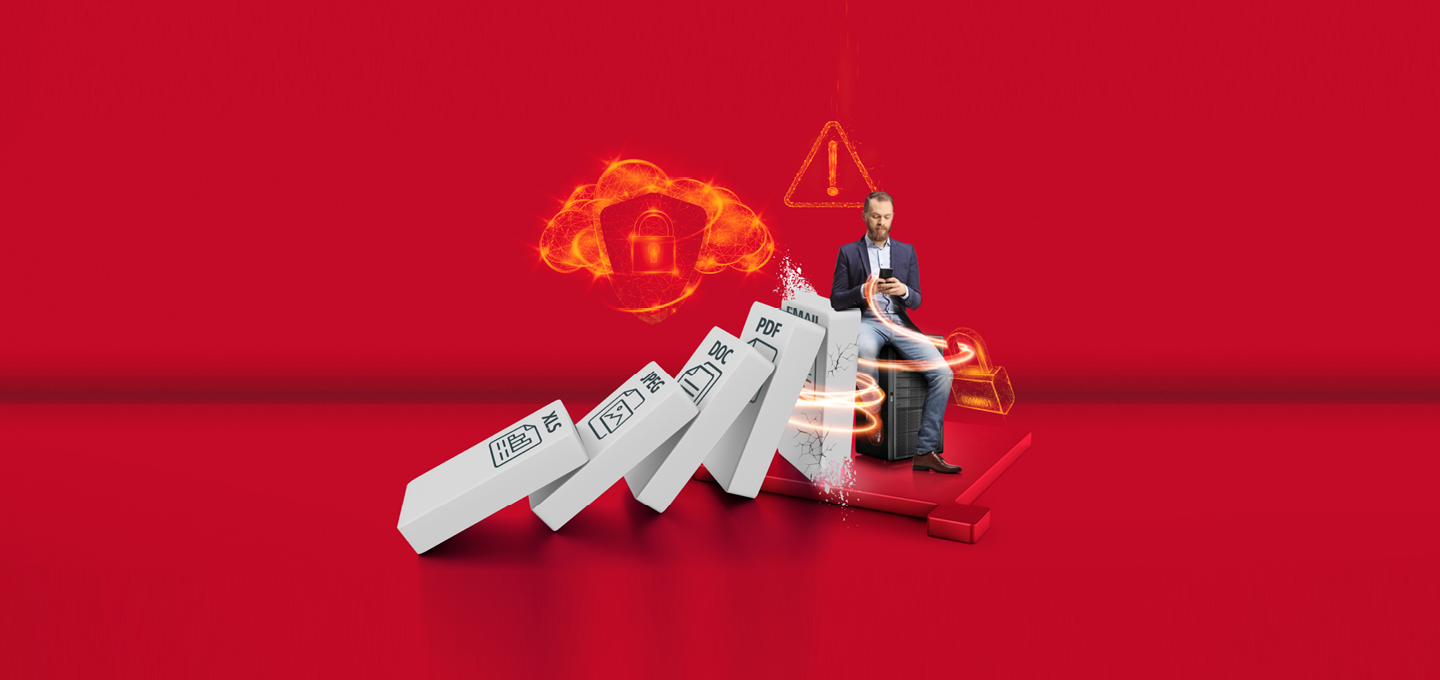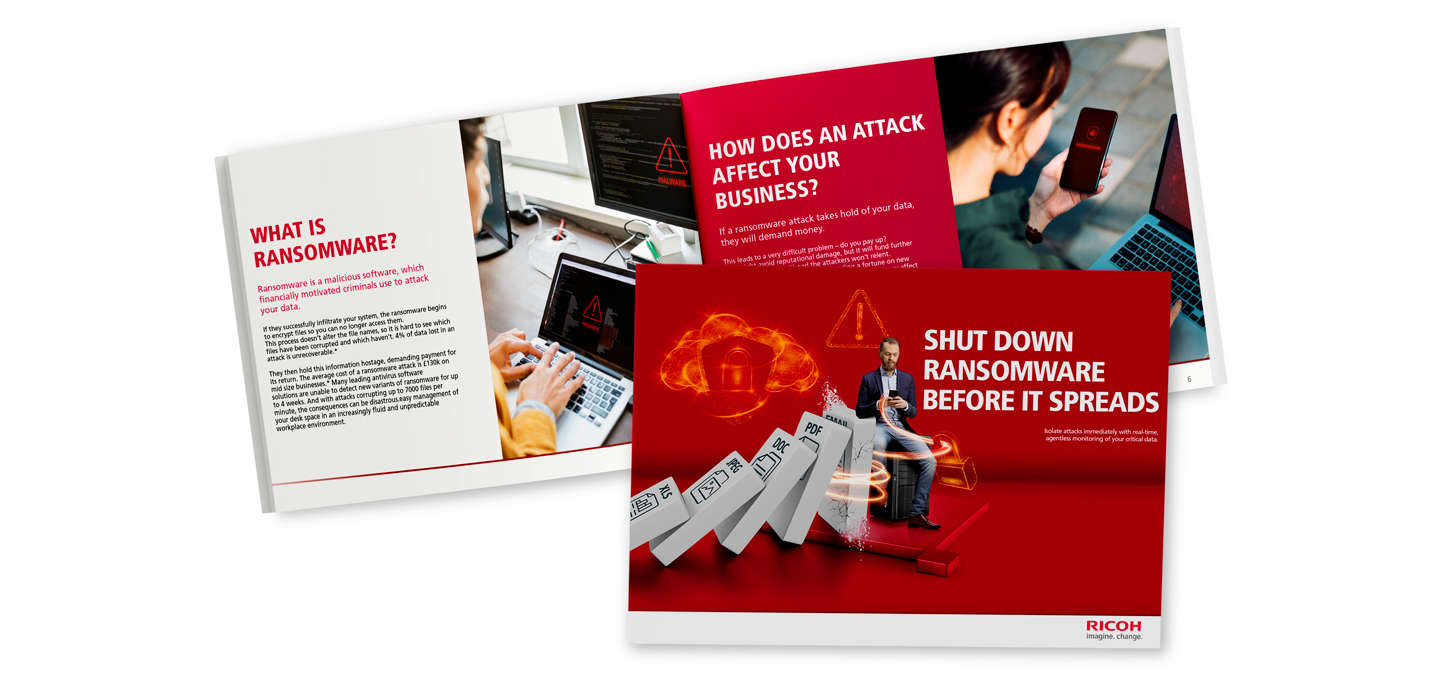break-line


Perimeter vs containment

Why you need to be proactive in the fight against ransomware
What is a perimeter-based defence?
Businesses traditionally enclose all of their data and devices within a perimeter, comprised of a combination of firewall, email scanners, web filtering solutions and endpoint security agents.
This attempts to screen everything that comes into the network then blocks or removes anything that is flagged as malicious. The business should then be able to trust that it will keep out invaders and that all activity within it is safe. But following digital transformation, this is no longer the case.
Why perimeter defence is no longer enough?
What are the potential consequences of a ransomware attack?

The solution? Containment.
How Containment works
Let’s connect
Talk to a Ricoh expert
Transform your workplace with Ricoh’s Managed Print and Automation Services.
Boost efficiency, reduce costs, and accelerate your journey towards digital transformation.
Contact us

















